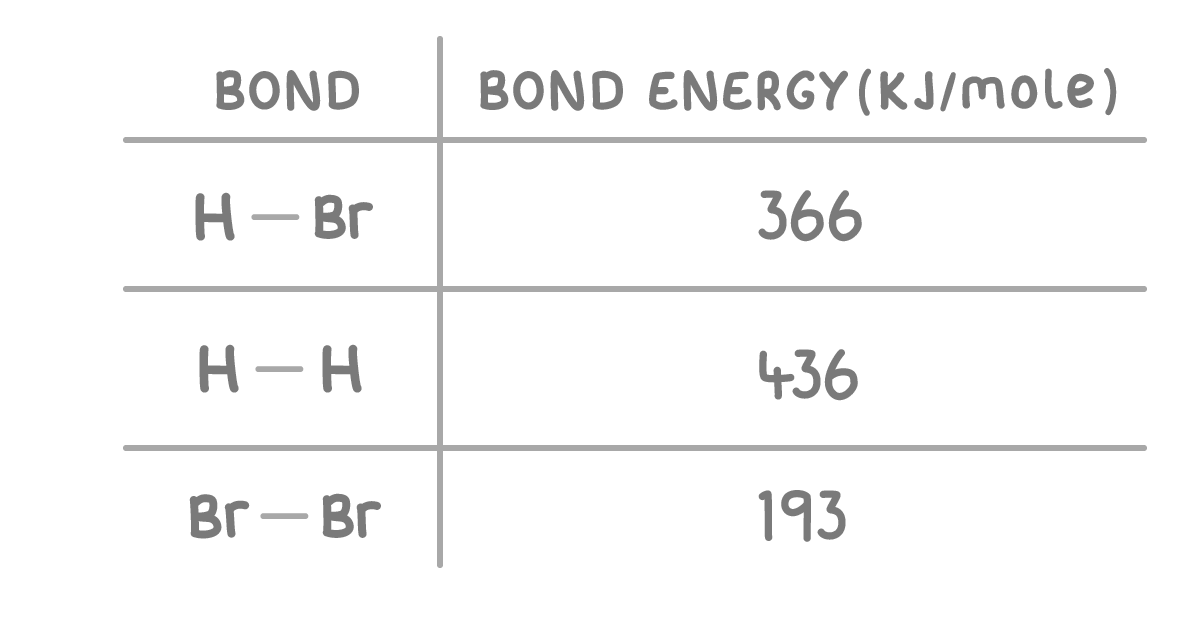Bond Energies
This lesson covers:
- How to use bond energies to calculate the energy change in a reaction
- How to use the energy change to determine whether the reaction is exothermic or endothermic
During a chemical reaction, three things happen:
- The bonds of the reactant molecules are broken
- The atoms rearrange themselves
- The bonds of the product molecules are formed
Does breaking bonds release energy or require energy?
Require energy
Release energy
|
Is breaking bonds exothermic or endothermic?
Exothermic
Endothermic
|
energy / break / group / mole
The term 'bond energy' refers to the amount of required to one of a particular covalent bond.
|
Bond energy values are always:
Positive
Negative
|
Is forming a bond an exothermic or endothermic process?
Exothermic
Endothermic
|
To calculate the overall energy change of a reaction we have to use the following equation: Energy required to break the bonds of the reactants - energy released by forming bonds. |
You can also think of this as: (energy of) bonds broken - (energy of) bonds formed |
or energy of reactants - energy of products All these mean the same thing - memorise whichever one makes the most sense to you. |
What type of reaction produces a negative energy change?
For example: -150 kJ/mol, -330 kJ/mol, -855 kJ/mol
An endothermic reaction
An exothermic reaction
|
During a chemical reaction, the bonds of the products must be:
Broken
Formed
|
2H2 + O2 ➔ 2H2O The equation above shows the reaction between hydrogen and oxygen to form water. |
The total energy required to break the bonds of the reactant molecules is 1370 kJ. The total energy released when forming the bonds of the product molecules is 1852 kJ. |
What is the overall energy change of the reaction? kJ/mol
|
Is this an exothermic or endothermic reaction? Exothermic Endothermic
|
|

What is the energy change of the above reaction?
kJ/mol
|


What is the energy change of the above reaction?
kJ/mol
|